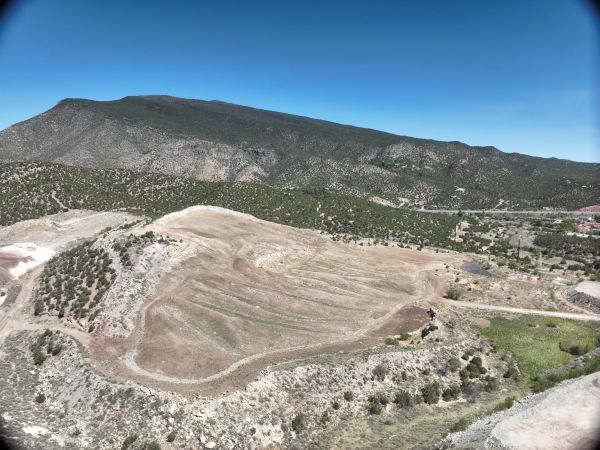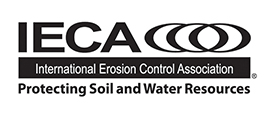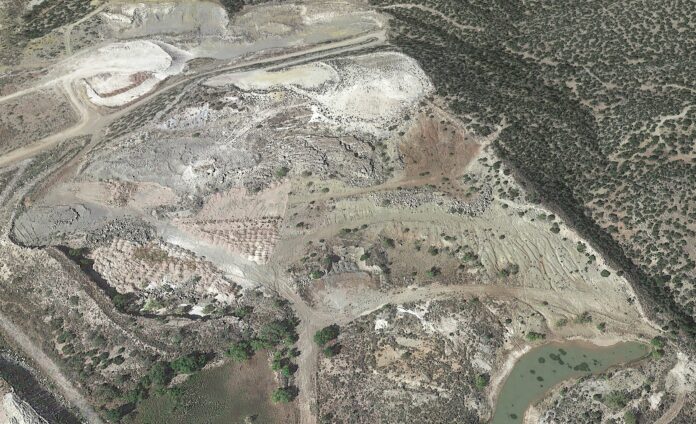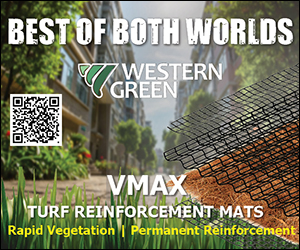In the mountains just east of Albuquerque, New Mexico, USA, a formerly mined landscape (Figure 1) has undergone a quiet yet remarkable transformation. What was once a steep, eroded limestone quarry — highly visible from the surrounding community and Interstate 40 — is now a sculpted, revegetated landform that mimics the natural terrain and supports native ecosystems. This transformation is the result of the reclamation of Quarry 1 (Figure 2), a project that has redefined what sustainable quarry reclamation can look like, by the author’s company.
Quarry 1 was no ordinary reclamation job. The site presented steep slopes, degraded soils and years of visual and ecological disturbance. Yet there was an opportunity in the challenge: a chance not just to meet regulatory obligations, but to restore the land in a way that would contribute to regional biodiversity, support long-term watershed health and serve as a positive example of industrial responsibility.
At the core of this reclamation effort was commitment to geomorphic design, which is a process that uses natural topographic patterns as the blueprint for reshaping the land. Rather than implementing traditional straight benches and uniform slopes, the project team used computer-aided design modeling and drone data to design a landform that mimics natural hills and valleys. This approach improves erosion control, integrates with surrounding terrain and provides the structural foundation for a self-sustaining ecosystem.
The execution of this design required technical precision and field adaptability. GPS-enabled earthwork equipment allowed for exact placement of materials, while high-frequency drone surveys informed real-time adjustments to the landform as it was built. This close coordination between field crews, engineers and environmental consultants allowed the author’s company to work dynamically and fine-tune slopes, drainage channels and planting areas as construction progressed.
One of this project’s most notable features is its approach to stormwater management. The reclamation includes a custom-engineered Rocky Bottom Channel (RBC) system that directs runoff across the site through shallow, vegetated drainage paths. Unlike conventional riprap-lined ditches, the RBC channels are designed with flat bottoms, earthen banks and strategically placed rock to slow water, encourage infiltration and support plant growth. The result is a stormwater system that is functional and ecological, reducing erosion while contributing to habitat complexity.

vegetation and drainage features.
Equally innovative is the approach to revegetation. Understanding that plant establishment in arid environments can be slow and difficult, the team implemented “vegetation islands,” which were groupings of native plants installed in key locations across the site. These islands act as seed banks and wildlife attractors and accelerate natural colonization over time. Plant species included piñon and juniper trees, cottonwoods in low areas and a diverse mix of grasses and forbs adapted to the high desert environment.
To further enhance ecological function, bluff features and rocky outcrops were constructed throughout the site. These provide shelter and nesting opportunities for birds, small mammals and reptiles, and they help diversify the microhabitats available within the reclaimed area. The goal was not just to cover the site with vegetation but to build an
ecologically functional landscape that could support a range of native species for decades.
Beyond the environmental engineering, the reclamation of Quarry 1 also offers visual and community benefits. The site is visible from a major interstate highway and nearby residential areas, which makes it a part of the public’s everyday landscape. The transition
from a stark, visibly disturbed quarry to a naturalized terrain not only improves aesthetics, but it also demonstrates the company’s commitment to being a responsible neighbor and long-term land steward.
This project is also an example of how proactive engagement and internal innovation can push the boundaries of what is expected in reclamation. While the project met all
regulatory requirements, the project went beyond minimum standards in multiple ways:
designing a more complex drainage network, reducing the use of hardscape materials, investing in advanced grading technology and committing to long-term vegetation success through reseeding and monitoring.
The impact of these decisions is already evident. The site shows strong initial plant establishment, with early vegetation reducing windborne dust and stabilizing soils. Stormwater is moving effectively through the site’s designed channels, which minimizes erosion and supports infiltration. Wildlife activity has been observed in the reclaimed area, which signals a positive ecological response. And the landscape itself has changed by blending more seamlessly with the surrounding hills, no longer a scar but a sculpted, living part of the region.
The success of Quarry 1 reflects more than just good reclamation practice. It embodies a philosophy of land stewardship that aligns with modern expectations of environmental responsibility in heavy industry. In 2024, a revegetation trial plot established at Quarry 1 helped refine seed selection and won the Excellence in Reclamation Award from the New Mexico Mining and Minerals Division of the New Mexico Energy, Minerals and Natural Resources Department.
But perhaps the largest impact of the project is its role in shaping how reclamation is viewed: not as the end of a quarry’s story, but as the beginning of a new chapter for the land. Through careful planning, collaboration and a willingness to innovate, the project has shown that even the most challenging sites can be restored in ways that are ecologically meaningful, visually compelling and socially valuable.
As more mining and industrial sites approach closure, the lessons from Quarry 1 are increasingly relevant: that post-mining landscapes can be more than safe; they can be sustainable, beautiful and resilient. The work in Tijeras offers a model worth replicating and a compelling case for raising the bar in land stewardship across the industry.
About the Expert
Miranda Moore is the environmental engineer for the GCC Rio Grande Cement Plant in Tijeras, New Mexico.






